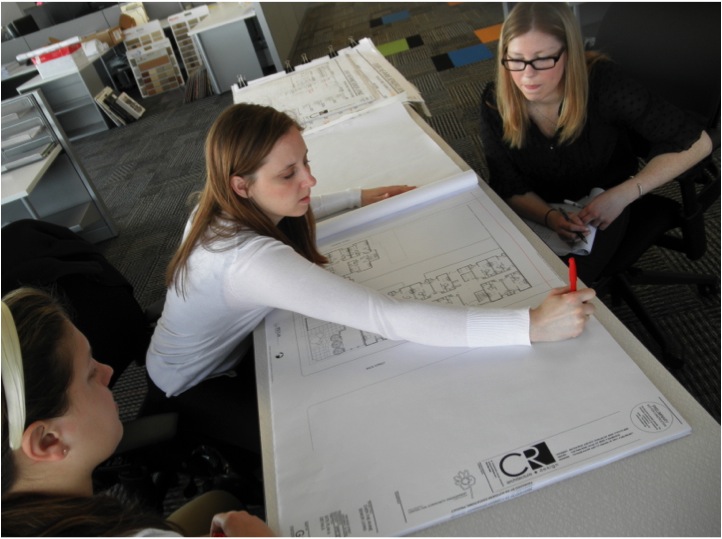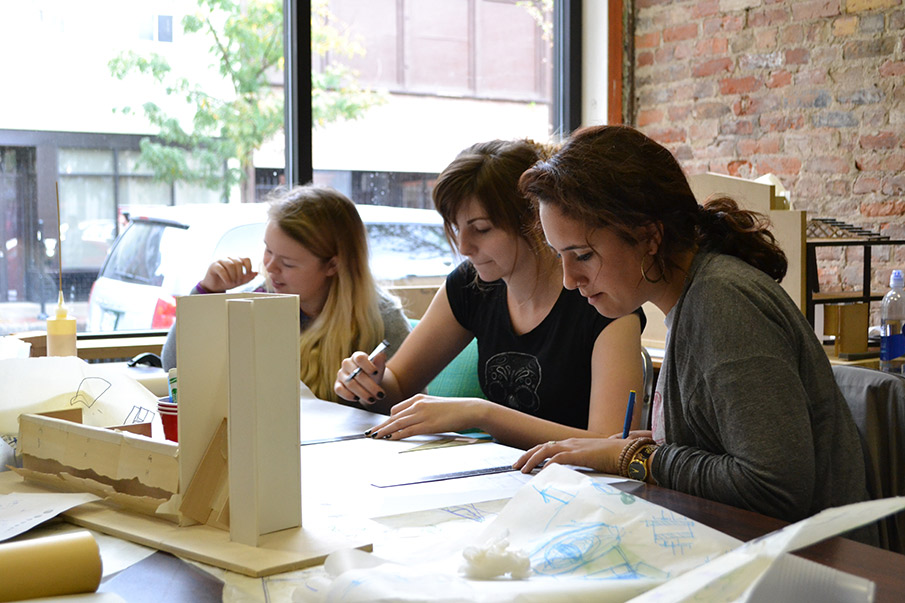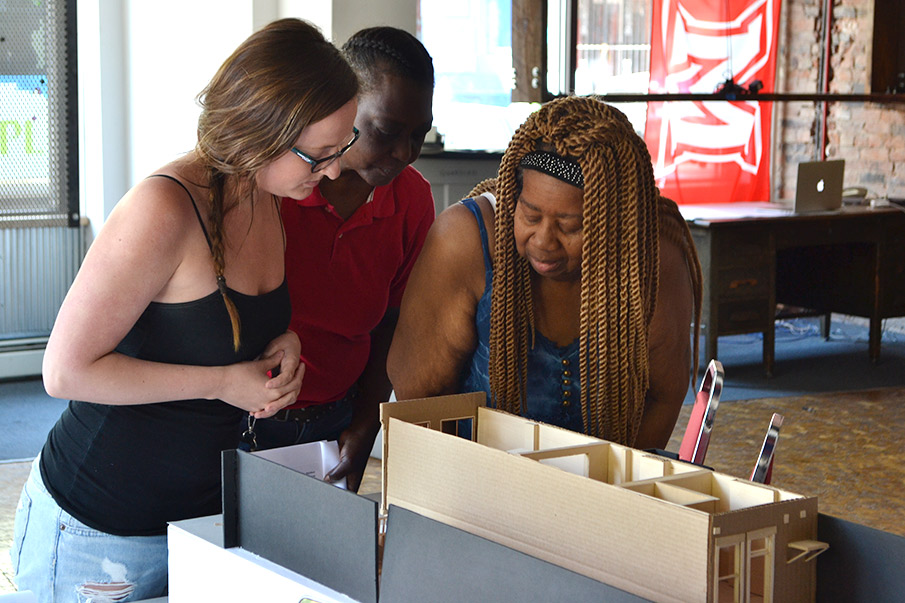The Miami University Center for Community Engagement was founded to support and augment the work of the People’s Movement, an ensemble of community organizations that addressed the disparities faced by the people of Over-the-Rhine. Movement implies action, not mere observation and study. University students and faculty bring their expertise and energy to the neighborhood to work alongside its citizens, following their lead. The result is an array of practices including DesignBuild, Socially Engaged Art, and Community Design.
Though we are situated in the Miami University College of Creative Arts and Department of Architecture and Interior Design, we recognize that transformation of the community and the overturning oppressive systems will not be accomplished by a single discipline. Through the encouragement of the community and endorsement of the People’s Movement, we have expanded programming to include multiple disciplines, notably education, social work, and social justice, and this has led to collaboration with multiple universities. We aspire to the wisdom of Lilla Watson, brought to us by community activist and liaison Bonnie Neumeier:

Design Build
Since 1996, Miami University’s Department of Architecture and Interior Design has collaborated closely with community organizations of Cincinnati’s Over-the-Rhine neighborhood on a variety of projects. Much of this work has been through the Over-the-Rhine DesignBuild Studio. As our primary practice, DesignBuild has endeavored to advance the social and physical rejuvenation of the neighborhood. Since its inception, DesignBuild Studio has completed over 25 projects, from single apartments to single family homes to multi-unit affordable housing buildings. DesignBuild students have recently renovated the lobby of a community center, a carry-out grocery, and a new office space and accessible courtyard for an advocacy group.
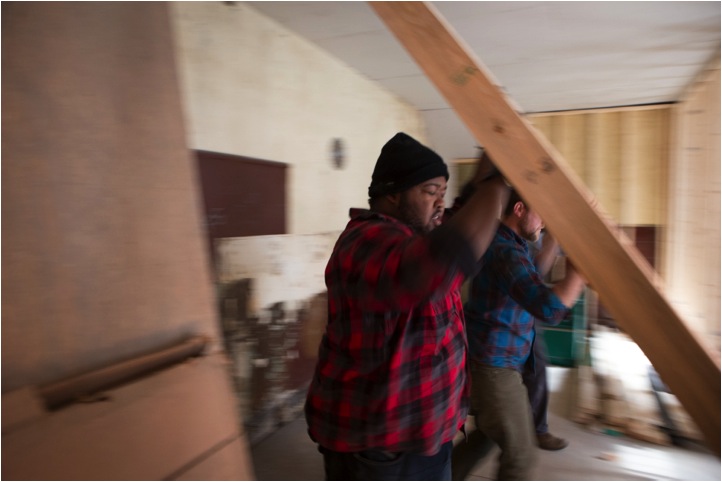


Socially Engaged Art
“Expression is the first step out of oppression.” We learned this maxim from our partners at Peaslee Neighborhood Center, so we aspire to hand the microphone (or paint brush, or hammer…) to our partners in the community, to hear them and follow their lead.
During the unrest of the summer of 2020, we devoted our storefront stage to Mass Action for Black Liberation (MABL) and their messaging, intending to bridge the “digital divide” found in our community. We also provided our windows for installations by Black community-based artists throughout the year.
Since 2017, the Center has partnered with community residents and artist Mary Clare Reitz to develop Storefronts, a series of installations that challenge dominant social, political, and economic narratives that attempt to define Cincinnati neighborhoods. This has resulted in large-scale projections during Cincinnati’s Blink event, live-broadcasts of interviews between community members, a performance piece around the pitfalls of redevelopment, and a solemn Vigil acknowledging the concurrent loss of community and our program’s founder, Professor Tom Dutton.
In the first decade of the Center, we engaged in “agit-prop” (from agitation-propagation)—student/community installations, conversations, and performances intended to daylight inequities and issues affecting people in the community and to challenge common narratives about Over-the-Rhine and urban Cincinnati.
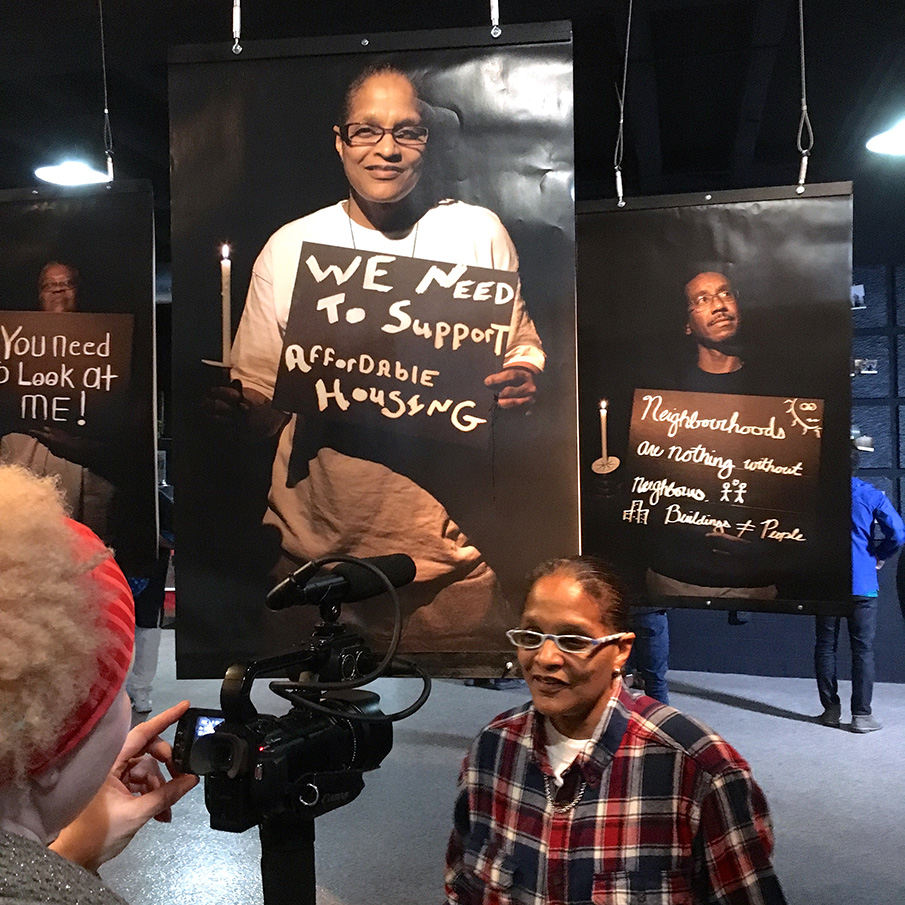
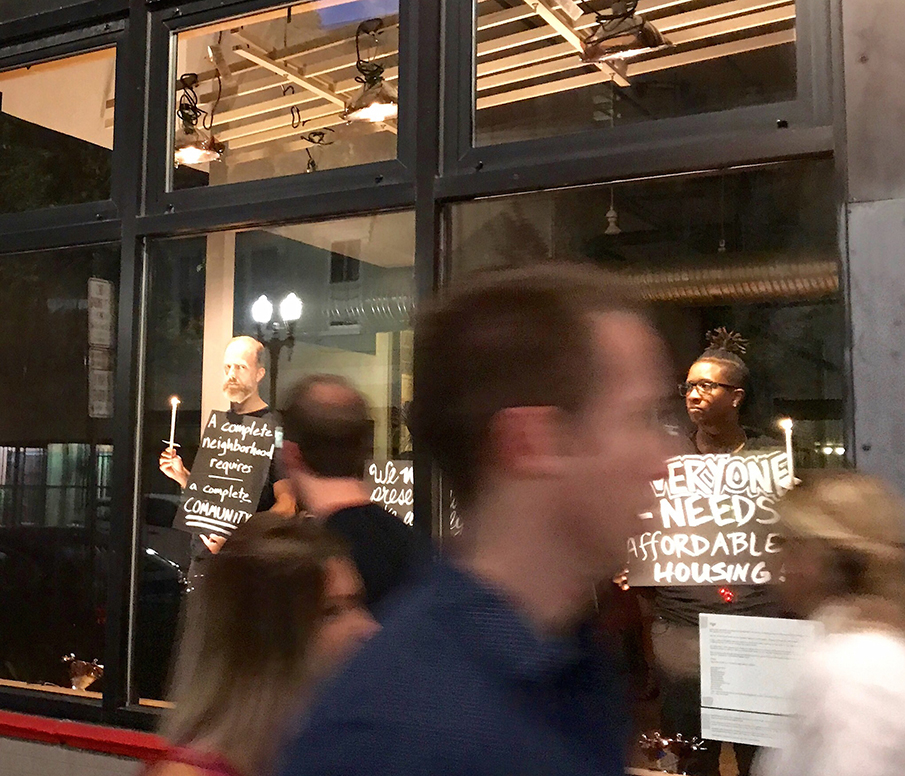
Community Design
Our community design work at the Center prioritizes the initiatives of the community– from producing alternative plans for Washington Park, to designing storefronts for the offices of our housing advocates, to undertaking preliminary designs for larger-scale affordable housing projects like Beasley Place and the large, open space at Main and Schiller. We developed the Atelier to take on projects that couldn’t be accomplished with DesignBuild. The Atelier is a misnomer, as it implies an antiquated, top-down approach to design. It was a working title that stuck. In reality, it was something different—it defined a new paradigm for the integration of architectural education and architectural practice, while prioritizing community-design initiatives.
Offered each spring semester from 2010-2015, the Atelier placed Miami design students in residency at an architecture firm, collaborating with non-profit partners, with the guidance of seasoned architects, consultants, and officials. The students lived in the neighborhood of Over-the-Rhine, and were ostensibly designing with their neighbors, while witnessing the extremes of gentrification and poverty.
The first Atelier project was 1417-1419 Republic, now Beasley Place, a vacant five story brick building. Students in the first Atelier generated a significant amount of project funding by surveying the building, generating historic tax credit applications, and providing the non-profit owner with workable plans they could leverage. Fittingly, Beasley Place opened as 13 units of affordable housing just after the completion of the last Atelier in 2015. Other Atelier community design projects included a prototype for the expansion of a non-profit’s headquarters into an adjacent lot (now under construction) multiple infill projects, and a proposal for a neighborhood center to lessen energy dependency by adopting Living Building Challenge principles.
